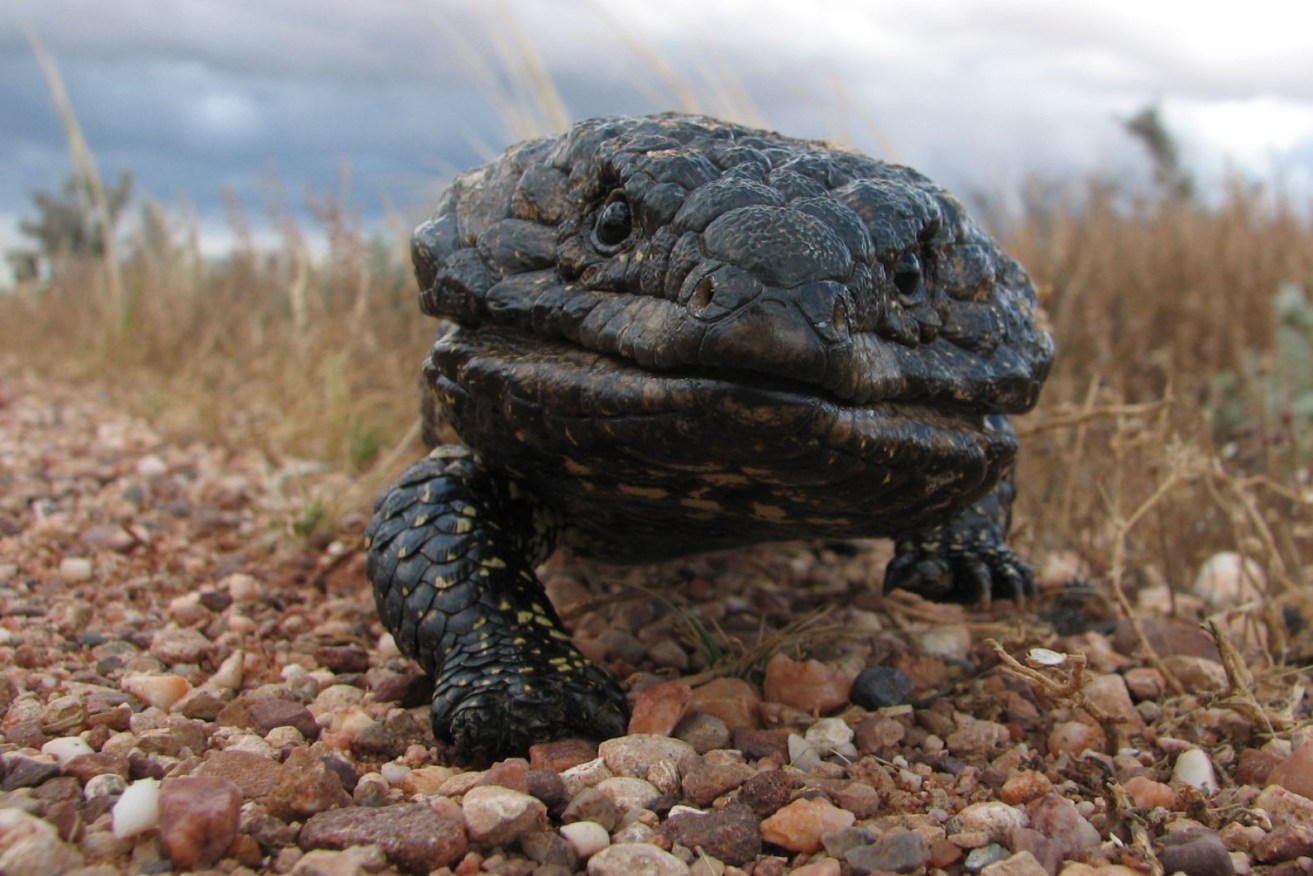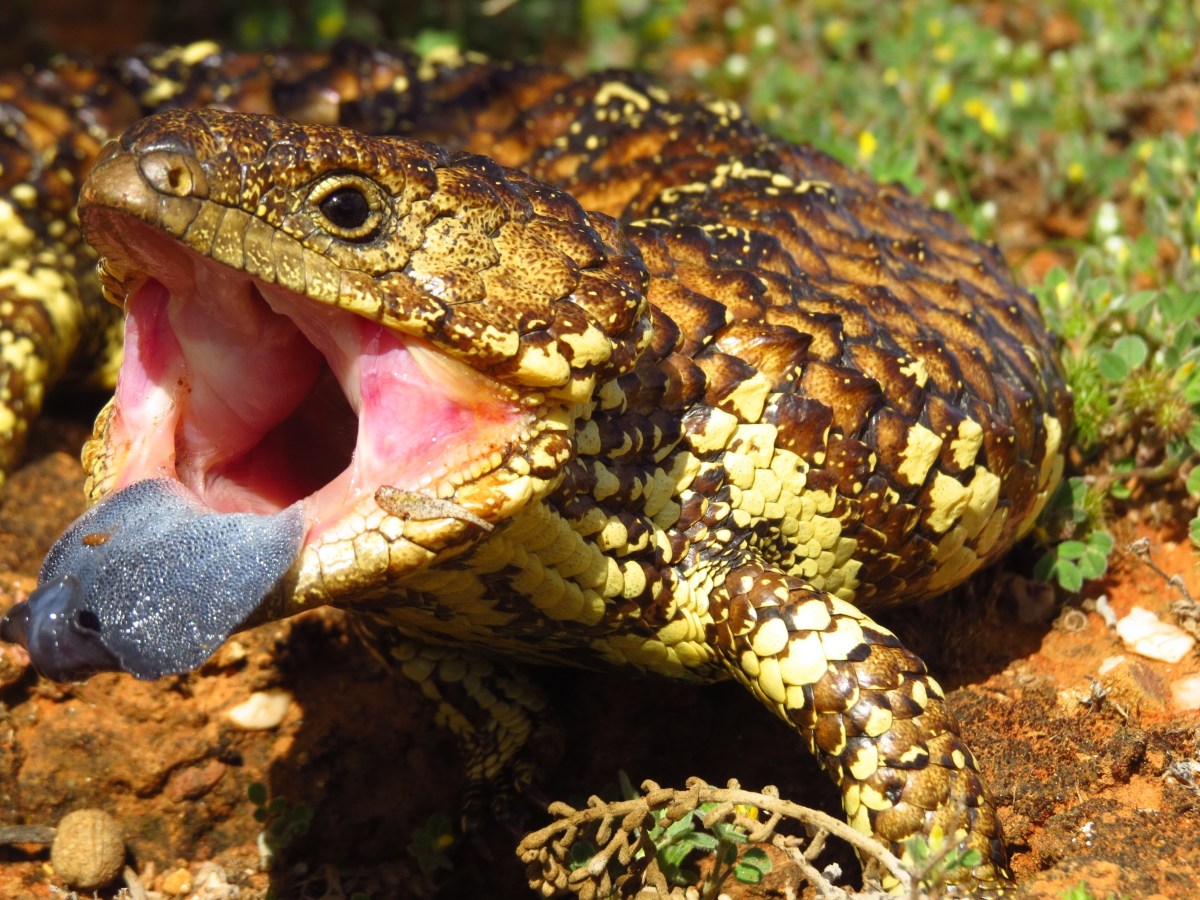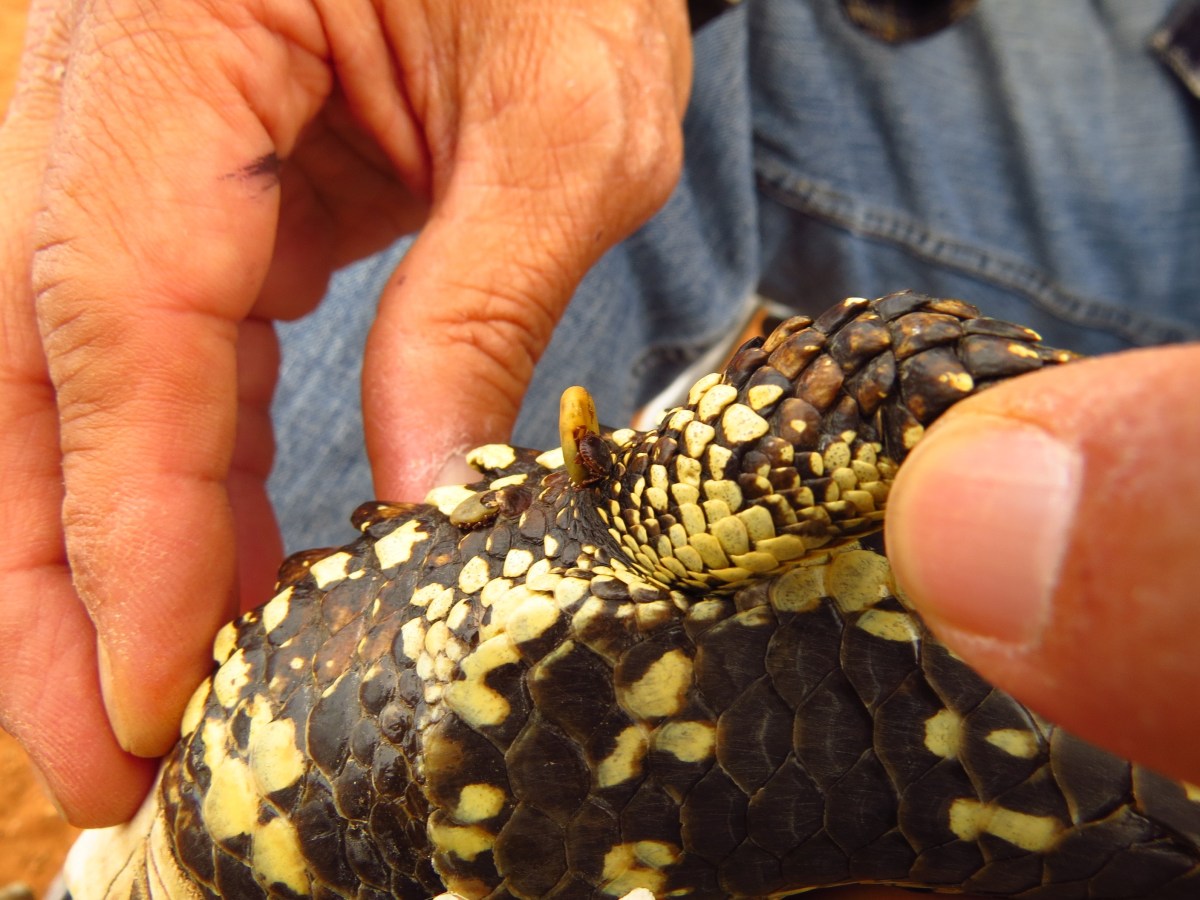Charismatic lizards have a mind of their own
Conservation of wildlife depends on understanding the ecology of various species and this plays a big role in how disease and parasites spreads in an animal population.

Photo courtesy Dr Stephanie Godfrey
Research led by Flinders University for the past 35 years is building a picture of how sleepy lizard behaviour determines their health and survival.
Now this knowledge of the intricate social behaviour of Australia’s native sleepy lizards has been shown to reflect on individual personality factors which can determine where they live, what they eat – and which animals they hang out with. This in turn determines their tick load and general disease risk.

Research published in Animal Behaviour studied the environmental, spatial and personality traits of 72 adult sleepy lizards, also known as shingleback or bobtail lizards in Australia.
Using GPS tracking to monitor their behaviour and social structures, biological scientists from the US, Australia and NZ found that the personalities of sleepy lizards (Tiliqua rugosa) tended to influence which members of the same species they lived with, as well as their living conditions.
Visualising this as a network of interactions among lizards in the population – like a Facebook for lizards – enabled the researchers to identify which lizards were more vulnerable to parasites.
Lizards with the most ‘friends’ in their social network had a higher tick loads.
They found less aggressive lizards exhibited both a stronger attraction to areas with more food and better refuge, and had a different attitude towards their female partner and the space they shared with other lizards.
As a result, lizard behaviour and movements affected their place in the social network, which in turn influenced their parasite loads.
Research collaborator Dr Stephan Leu says the fieldwork on the sleepy lizard is continuing with colleagues collecting more data during the current field season to build on the wealth.
“The importance of this study is that it outlines connections between animal personalities, movement ecology, networks and parasite transmissions in an integrated framework,” says Dr Leu, a Flinders and now Macquarie University researcher.
“In particular, it highlights that different personalities respond differently to their environment, which influences their movement and space use.
“This then influences network connectivity which in turn affects parasite transmission and how heavily individuals are infected by parasites.
“Importantly, we then use the charismatic sleepy lizard, where we have collected a very extensive data set on all aspects of the framework to illustrate these key links.”

Tick infestation in a lizard ‘armpit’. Photo Dr Orr Spiegel
The paper, entitled ‘Integrating social networks, animal personalities, movement ecology and parasites: a framework with examples from a lizard’, features work by lead author Dr Andrew Sih and Dr Orr Spiegel from the University of California Davis, Dr Stephan Leu (Macquarie University, NSW), Dr Stephanie Godfrey (Flinders and now University of Otago, NZ) and the late Flinders Professor Michael C. Bull.
The paper is the culmination of years of research in outback South Australia led by Flinders University herpetologist, the late Professor Michael Bull.
With field assistant the late Dale Burzacott, and a long line of Flinders students and community volunteers, Professor Bull extensively resesarched the ecology and behaviour of sleepy lizards in South Australia.
His work has inspired a new generation of researchers, including Dr Godfrey, now a lecturer in zoology at the University of Otago.
Associate Professor Mike Garder continues the work at Flinders University which has set up a donations portal for this lizard conservation research at this webpage: see ‘Preserving the longest-running lizard survey in the Southern Hemisphere’ here.





